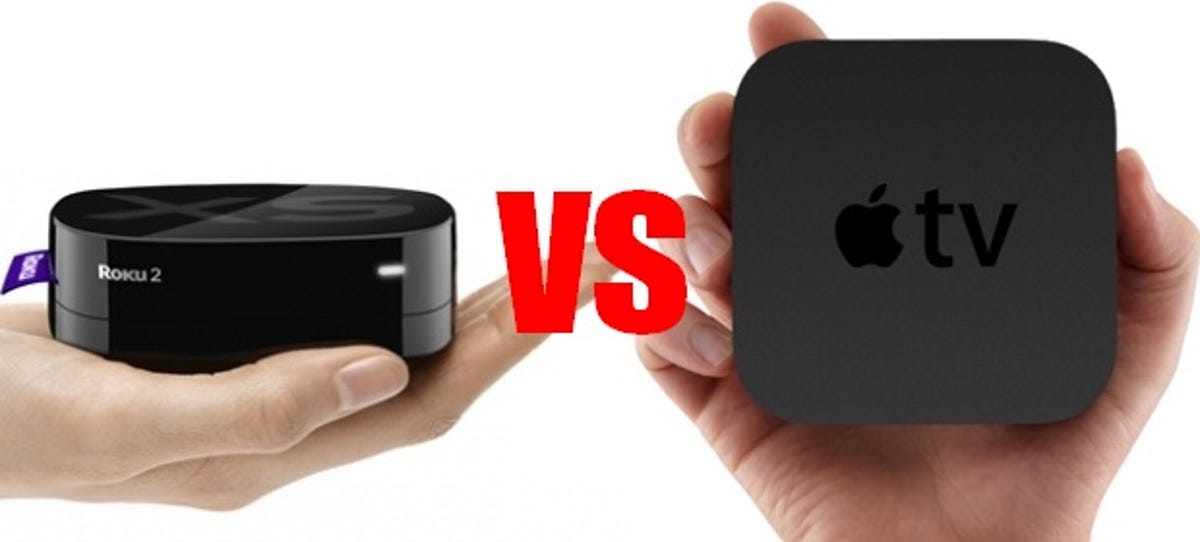
When a young upstart picks a fight with an undisputed heavyweight champion like Apple, you’d better pray the plucky underdog has been chasing chickens and punching enough cow carcasses to be primed for the pummeling.
In this media streamer dust-up, the rookie Roku 2 XS is pitted against the Apple TV. Both of these players are designed to let you stream video and audio content from the web. One of them is going home in an ambulance. Read on for my round-by-round ringside
adjudication, and for more in-depth info on each, read my Apple TV review and Roku 2 XS review.
Round 1: User interface
Roku has gone for a simple design on its menu system. The home screen consists of a single banner running across the centre of the screen that has large icons for the various ‘Channels’ (Roku-speak for apps). It’s fairly easy to use, although the more channels you add, the more tedious it becomes to scroll over and back along the long list. The presentation is quite basic as it lacks the graphical flare that marks its rival out from the media streaming pack. Apps like iPlayer also take an age to start up.
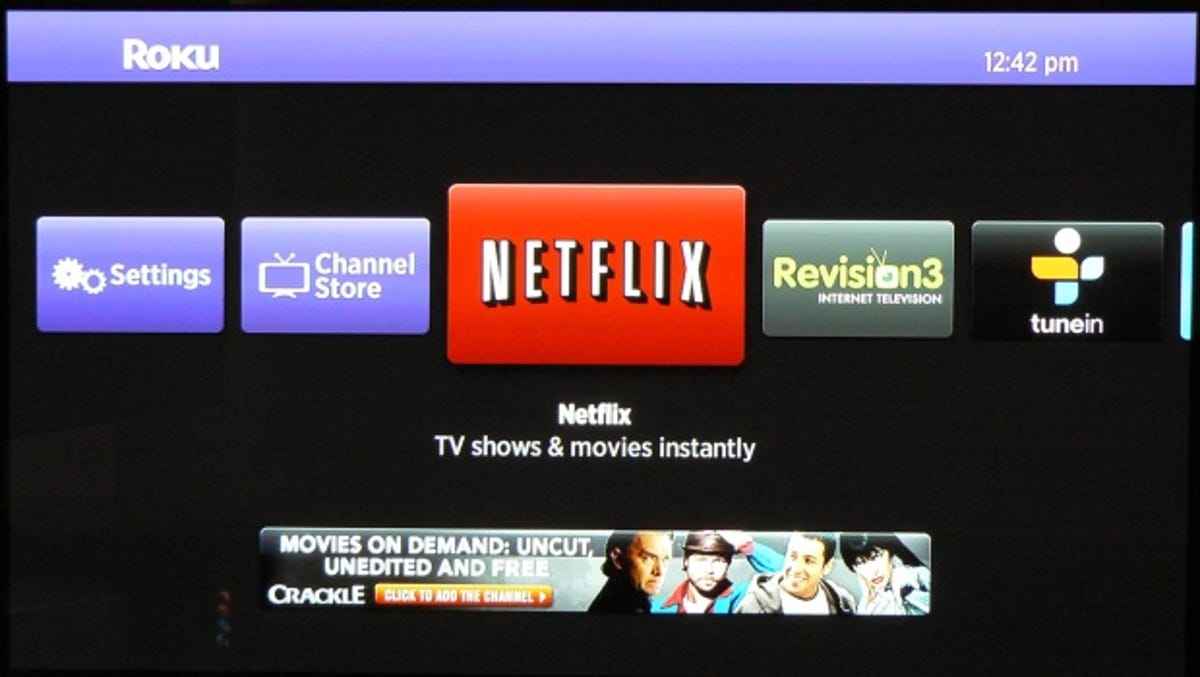

The Roku 2 XS has a single navigation banner spanning the middle of the display, which is simple but can be tedious to scroll along.
The menu system on the Apple TV is by far the best you’ll find of any media streamer on the market. It looks absolutely gorgeous and it’s packed full of neat transitions and smooth animations. Cover art scrolls effortlessly by in the various menus and the lightning-quick interface makes it obvious that the whole system is running on much more powerful hardware — in this case, a single-core A5 processor.
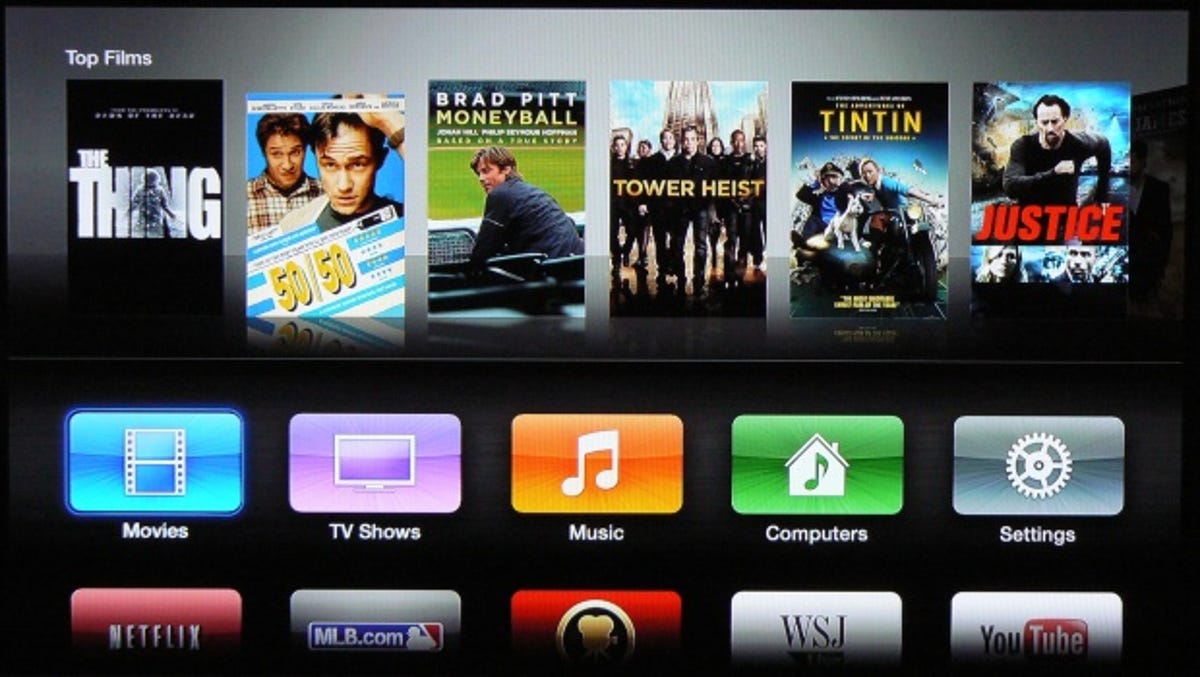

The Apple TV’s user interface is more inviting than that of the Roku 2 XS.
Winner: Apple TV
Round 2: Content
Roku trumps the Apple TV by including a BBC iPlayer app that allows you to watch both standard-definition and HD streams. It also has a great Netflix app onboard that’s a cinch to use. There are plenty of other apps that you can install from the Channel Store, including the likes of Crackle, which offers free streaming of older movies and TV shows. It’s also home to a neat version of Angry Birds, which is fun to play with the Roku’s motion-sensing controller.
It then goes and lets its guard down by missing out some critical apps. It’s bewildering that there’s no YouTube app included. Where are you going to go to watch cute videos of cats? Okay, you could use the Vimeo app instead, but it’s not quite the same. While the Roku does have a surprisingly broader selection of apps than the Apple TV, a lot of them offer pretty pedestrian content. It also lacks a premium movie service where you can buy and stream recent titles.
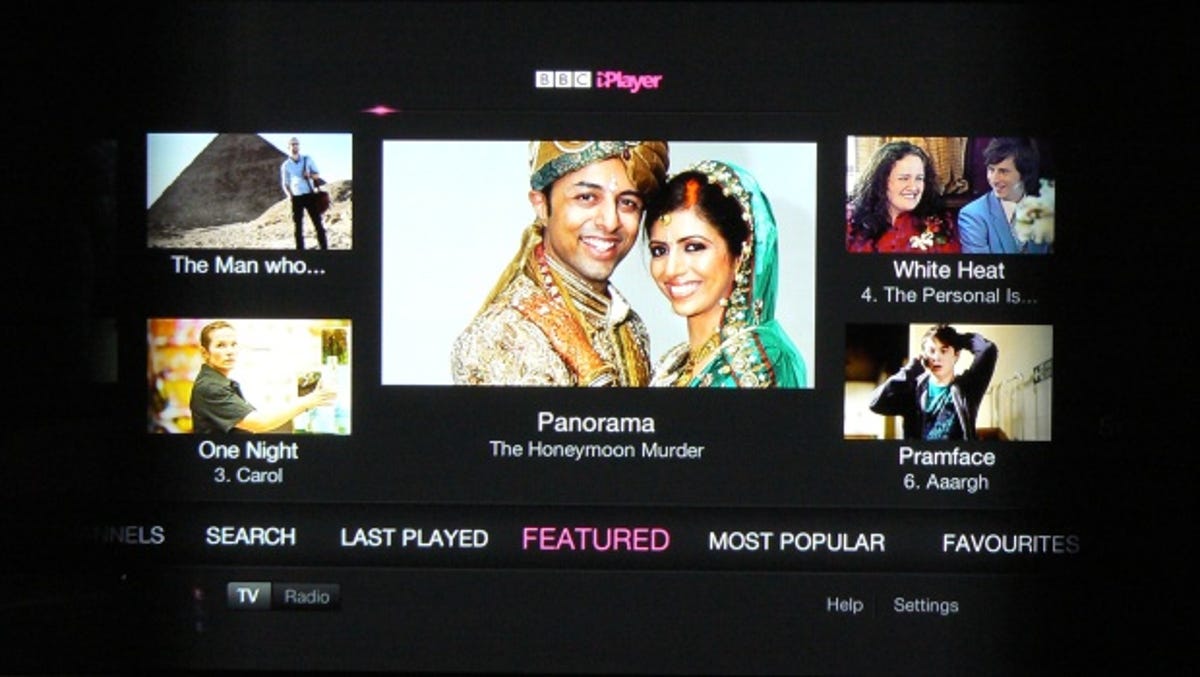

Unlike the Apple TV, the Roku 2 XS includes a BBC iPlayer app…
Apple keeps a much tighter rein on the content that’s available on its telly box. The unit is built around the iTunes Movies and TV Shows stores that take pride of place on the menu. This gives you access to lots of recent content, albeit at a price. It will set you back £3.49 for a new standard-definition movie like Tintin, or £2.99 for an older film like Back to the Future, and you can pay more for HD versions.
There’s a top-notch Netflix app too for accessing films and TV shows for a subscription of £5.99 a month. But due to distribution deals in place in the UK, iTunes currently offers more recent titles than Netflix.
It’s a huge minus that the Apple TV lacks BBC iPlayer, but at least it does have YouTube, Vimeo and Flickr.
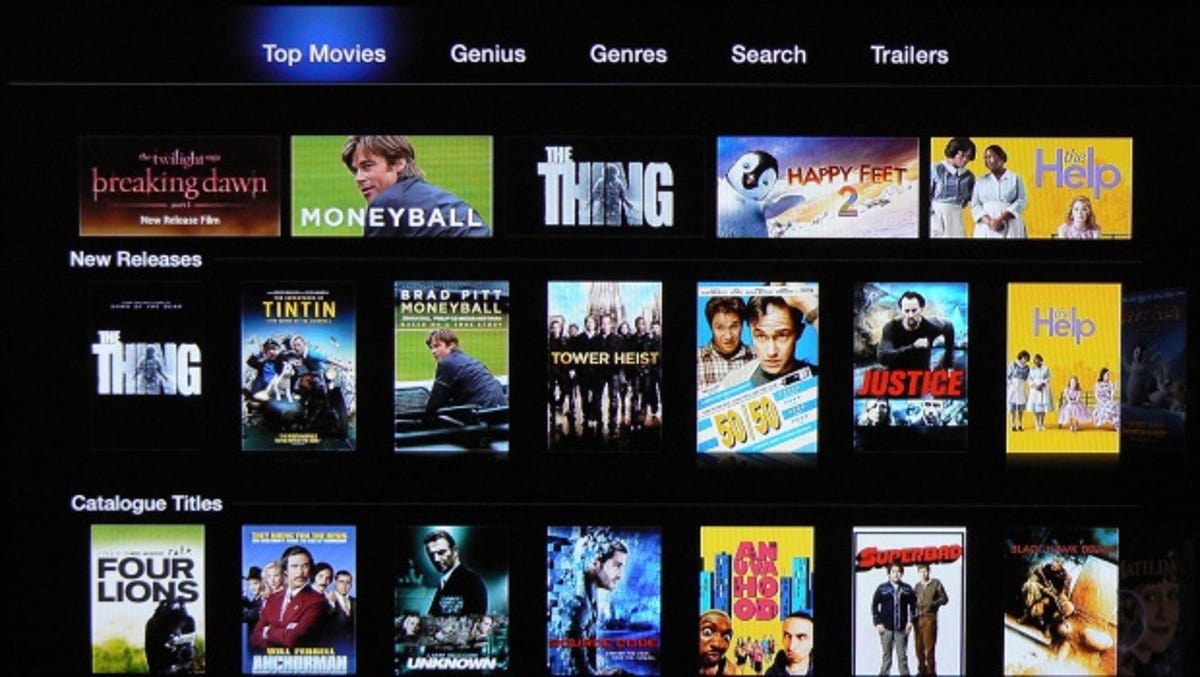

…but the Apple TV lets you buy and watch up-to-date movies.
When it comes to streaming your own content stored on your computer, both devices suck. On the Roku, you need to download and install the clunky Plex software on your computer before adding the Plex app, which is very sluggish to use.
You can share content with the Apple TV via either Home Share in iTunes or by using AirPlay from an iPad or iPhone, but you’re tied into using Apple formats, so you can’t stream Xvid or MKV files to it.
Winner: Apple TV
Round 3: Design
Both players sport a similar design. The Roku is the more compact of the two, measuring a mere 84mm square, which is 14mm smaller than the Apple TV. It’s finished in gloss black with a quirky clothes tag attached to the left-hand side. One problem is that it’s so lightweight it gets pulled around by the cables you attach to it.


The designs couldn’t be much more similar. Here’s the Roku 2 XS…
The Apple TV, on the other hand, is heavier and feels more solid. In the flesh, the Apple TV’s design has a more premium feel to it.


…and spot the difference with the Apple TV.
The Roku uses a Bluetooth remote control, so you can completely hide it out of the way, whereas the Apple TV relies on a traditional infrared zapper that needs line of sight to work. That said, you can download the Remote app, if you’ve got an iPhone or iPad, and control it that way over Wi-Fi.
Winner: Apple TV
Round 4: Connectivity
Both of these players have fairly basic connectivity. The Apple TV has built-in Wi-Fi Wireless N, along with an Ethernet socket, HDMI port and optical digital audio output. There’s also a micro-USB port, but this is only used for service and support.


Connections on the Apple TV are pretty basic.
The Roku also has Wi-Fi Wireless N, along with Ethernet and HDMI ports. A microSD card slot is included for game and channel storage if you run out of space, but you can’t use it for storing video files. There’s a mini-jack output for stereo audio and composite video so you can use it with very old tellies that don’t have HDMI.
Optical audio output is missing, so unless you’ve got a new HDMI-capable surround sound amp (and most people don’t as they’re quite new), you won’t hear surround sound from movies on services like Netflix, which is a downer. On the plus side, the player does have a USB port, so you can attach external devices to it — something you can’t do with the Apple TV.


The Roku 2 XS lacks an optical audio output but it does have an A/V port that delivers composite video for older TVs.
Winner: Roku 2 XS
Overall winner: Apple TV
The Roku 2 XS works well as a Netflix player and the BBC iPlayer app is a boon, but the range of content is otherwise very patchy. In the US, it supports a huge range of premium services, but that’s simply not the case in the UK, at least at present. The interface is also very basic and apps take way too long to start up.
The Apple TV is certainly not without its faults. I really wish it had an iPlayer app, for example, and an App Store certainly wouldn’t go amiss. In its favour, it’s much faster to use than the Roku and the user interface is beautifully presented — it’s really responsive and a pleasure to use.
There are tonnes of new movies and TV shows available to buy and rent from the onboard iTunes store and it also acts as an excellent Netflix player. So if you’re looking to access premium content, the Apple TV is the one with the knockout punch.




